1 - General Information
1.1
|
General
This manual forms part of RAI Amsterdam’s Facility regulations (in Dutch, Accommodatiereglement), which provide a complete overview of the preconditions for participating in or organising an event in a safe and legal way.
All employers have a statutory duty to provide good working conditions for their staff. Employees and third parties are, in turn, obliged to exercise due care and caution in order to avoid health and safety risks. All employees, freelancers, standholders and visitors should use personal protective equipment in the correct manner when carrying out their activities, (see Article 4 in this document).
- Compulsory identification and age
The Compulsory Identification Act states that everyone in the Netherlands aged 14 years and over must carry valid proof of identity at all times and, on request, produce this to a competent authority. In the RAI Convention Centre too, everyone must be able to show their ID upon request.
For Dutch nationals the following documents are valid proof of identity:
- Dutch passport, Dutch identity card or Dutch driving licence.
For non-Dutch nationals, the following documents are valid proof of identity:
- residence permit issued by the Aliens Department (Vreemdelingendienst);
- non-Dutch passport in which the issuing of a residence permit has been noted by the Aliens Department;
- identity card of an EU country;
- refugee or aliens' passport.
People who refuse to produce evidence of identity on request may be requested to leave the Convention Centre and, if necessary, forcibly removed. Persons under the age of 16 years are not allowed into the Convention Centre during the setup or breakdown of exhibitions, conferences and other events (including during holiday periods). Young employees who have yet to reach the age of 18 and interns/trainees may in carry out work only if this poses no danger to their health or the environment. If it may pose a danger to health or the environment, expert supervision must be present while the work is being carried out.
- Safety codes
All employers are responsible for the working conditions of their employees and for the safety of other persons in the immediate proximity of employees in the course of their work. Employees should comply with applicable regulations, directions, instructions and procedures connected with safety in the broadest sense. In addition, they should make people in their immediate proximity aware of the importance of complying with regulations, directions, instructions and procedures.
A theft, accident or other emergency should be immediately reported to the emergency number (+31 (0)20 549 12 34) of the Convention Centre.
It is strictly prohibited to bring weapons into and/or bear weapons in or near the Convention Centre without authorisation.
During the exhibition setup/breakdown periods, RAI employees and suppliers are strongly advised not to walk through the exhibition halls, meeting rooms and lounge areas where the work is being carried out.
- Work activities
All work activities should be carried out with due care and without haste in order to minimise the likelihood of unsafe situations.
- Work pressure can be reduced by having a clear plan of action, taking sufficient breaks and ensuring that responsibilities are clearly assigned. To prevent injuries, workers should preferably not wear rings, piercings, watches, bracelets or necklaces while working. Jewellery and loose clothing may in any event not be worn when working with machinery that contains moving parts.
- Proper preparations should be made before work is started. Unsafe situations can arise if no or poor preparations are made. Unsafe situations should be reported immediately to the Event Manager of RAI Amsterdam see Contact Data Annexe.
- The duty Event Manager should be contacted if any uncertainty arises about certain types of work, see Contact Data Annexe.
- When operating machinery, and during hoisting activities and catering work, personnel with long hair should wear it in a short ponytail or a hair net.
- Equipment and tools may only be used for the purpose for which they are intended and whose operation is known.
- Access policy
The Convention Centre is only accessible with a valid admission badge during setup and breakdown periods. With the exception of couriers’ services (for which special courier and supplier badges are made available) any person present in the exhibition halls during the setup and breakdown of events should register online for the exhibition/event concerned. Stand-builders and suppliers are explicitly requested to register in advance in order to ensure rapid access on arrival at the Convention Centre.
Registration may also take place at the relevant registration desk in the Convention Centre. A discernibly valid proof of identity (and a valid employment permit for non-EU residents) must be produced for this purpose.
|
1.2
|
Liability
RAI Amsterdam is not liable for any form of damage and/or loss of goods, tools or possessions. Nor is it liable for bodily injuries unless there has been intent or gross negligence on the part of RAI Amsterdam.
|
1.3
|
Duties and responsibilities
Everyone is responsible for their own working conditions and those of their colleagues and other persons who are in the place of work in the immediate proximity of the employee. Employers are responsible for supervising their own employees.
|
1.4
|
Licences and permits
Work permits
An application may have to be made for a permit or licence for certain types of activity. This can be requested from the Permits Desk or, in the event of work on the building, from the Building & Technology Department of RAI Amsterdam. A detailed explanation can be found in the Facility regulations.
When rigging activities are required a proposal should be made to the RAI Account Manager. For a detailed explanation see the Rigging Manual, also available from your Account Manager.
Event-specific licenses
Ensuring quality is one of the main goals of RAI Amsterdam. To optimise the quality of its hospitality, RAI Amsterdam has introduced a major administrative innovation related to the licensing procedures for events. Thanks to a unique partnership between RAI Amsterdam and the Municipality of Amsterdam, the RAI was the first private company in the Netherlands to be allowed to regulate and enforce various event-related licences, namely:
- event licences;
- object licences;
- licences for distributing flyers/samples;
- licences for stand and gallery construction;
- licences for placards and posters;
- collection licences;
- declarations of no objection to launching cable balloons;
- lottery licences;
- licences for barrel organs;
- licences for animals at the stand;
- licences for helium balloons (indoor);
- licences for water objects at the stand.
Activities Decree
Since January 2016, RAI Amsterdam has been covered by the Activities Decree for environmental management under the Decree on general rules governing the environmental management of sites (Activiteitenbesluit milieubeheer). This means that the RAI’s environmental permit has lapsed. RAI Amsterdam must comply with the requirements of the Activities Decree, which cover all activities in and around the Convention Centre, including activities which may cause environmental damage. Examples include surface water pollution, environmental damage, light pollution, odours and soil contamination. RAI Amsterdam’s activities are covered by bespoke rules when it comes to noise.
Toolbox
The toolbox-meeting is a way of consultation with safety as the main topic. The meeting is focused on the current activities.
The employer is responsible for a preventive and effective way of informing the risks a position has. Topics that most likely will be discussed at the toolbox meeting are topics related to safety (working with
ladders, working on heights, roofs, working with electricity), recent accidents and the current situation on the floor.
|
1.5
|
Training, information and general basic knowledge of safety
Employers are responsible for ensuring that workers and third parties who are hired or contracted by them are properly briefed on the work they are to perform, the related risks, and the measures taken to prevent
or mitigate these risks. In addition, employers are responsible for ensuring that employees are sufficiently trained and educated.
RAI Amsterdam has set two standards: SCC (Safety Health and the Environment (SHE) Checklist for Contractors) and OHSAS 18001 as guidelines for its employees in its operational activities. In the future, RAI Amsterdam will also use these standards as guidelines for activities carried out by third parties.
|
1.6
|
Rules on smoking
- Smoking is prohibited inside the all the areas of the Convention Centre, including in the underground car parks. Areas where smoking is prohibited are indicated by No Smoking signs (figure 1).
- Smoking is permitted outdoors at the RAI only in the designated areas marked with a Smoking Area sign (figure 2). Cigarette butts must be discarded in the ashtrays provided in these areas.
- Safety Managers monitor and enforce compliance with these rules on smoking.
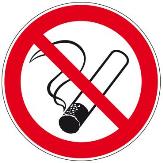
Figure 1: No Smoking symbol |
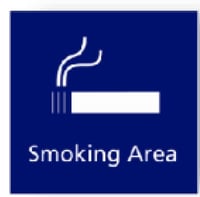
Figure 2: Smoking Area symbol |
|
1.7
|
Alcohol and recreational drugs
- Alcoholic beverages, recreational drugs and/or psychedelic substances may not be brought into or consumed in the Convention Centre during work.
- Working in the Convention Centre while under the influence of stimulants or intoxicants of this kind is not permitted.
- Everyone is required to submit to a search for prohibited stimulants or intoxicants when requested by a RAI Amsterdam Safety Manager. Those who refuse to cooperate may be requested to immediately leave the RAI’s premises and grounds.
|
1.8
|
Aggression and violence
- Aggression or violence in or around the Convention Centre is not tolerated. If a worker engages in any form of aggression or violence, this should be communicated directly to the superior of the person concerned or to the duty Event Manager (in the case of outside contractors) and/or the Safety & Security department.
- Any person who is confronted with any form of aggression or violence should not engage the person concerned in discussion.
- An investigation may be instituted into the nature of the incident if an act of aggression or violence occurs.
- Any person who has committed any form of aggression or violence runs the risk of being barred from the Convention Centre for a considerable time.
|

|
|
1.9
|
Safe and healthy working conditions
Employers must ensure safe and healthy working conditions for their employees. The Dutch Working Conditions Law requires that measures be taken in a certain order, starting with the source of any problem. This is also known as an occupational health strategy.
The order of this occupational health strategy is as follows:
- Source measures
An employer must first eliminate the cause of the problem.
for example: by replacing harmful substances with a safer alternative.
- Collective measures
If source measures are not available or effective, employers must take collective measures to reduce risks.
For example: they can install protective screens or an extraction system.
- Individual measures
If collective measures are ineffective or insufficient, employers must take individual measures such as organising work in a way that minimises risk to workers.
For example: by job rotation.
- Personal protective equipment
If the above measures are ineffective, employers must provide individual protective equipment.
For example: earmuffs and protective goggles.
|
2 - Crisis management plan
The crisis management plan is a collection of all plans and sub-plans intended to prepare the Convention Centre for an emergency. For this purpose, an emergency is deemed to be an unexpected event that causes damage or injury. During emergencies the crisis management plan governs the actions of the staff in carrying out their duties.
2.1
|
Preparations for a possible emergency
Preparation means taking measures in advance to deal with possible contingencies. Various preparations can be made to deal with potential emergencies, such as fire prevention measures. RAI Amsterdam also has its own in-house emergency response service (abbreviated as BHV in Dutch). In addition, RAI Amsterdam personnel follow crisis management training courses and are well informed about ways of preventing emergencies where possible.
|
|
2.1.1
|
Fire safety
- The use of flammable materials is not permitted. Such materials may be used only if they fulfil the requirements set out in the Facility regulations.
- All materials used in the construction of stands should comply with the requirements set out in the building decree.
- Textiles used to carpet or otherwise decorate exhibition stands or halls should be impregnated beforehand with fire retardants insofar as the material does not have fire retardant properties. Written proof of the fire retardant character of textiles must be presented upon request.
- The use of the following substances/equipment is permitted only with the prior written permission of the RAI Amsterdam Safety & Security department:
- electrical and/or Calor gas equipment for demonstrating cooking, frying and deep-frying;
- compressed or liquid gases;
- fire accelerant liquids;
- non-ionising radiation equipment.
- The use of flammable or explosive substances, gases and hazardous goods, including ionising radiation, is not permitted unless specific licenses have been granted; for instance for theatre fireworks and special effects.
|
|
2.1.2
|
Extinguishers
- Fire extinguishers may be used only to extinguish a fire. All fire extinguishers and fire hoses should be properly reachable and visible at all times. Access must not be blocked.
- Fire extinguishers should bear a valid expiry date.
- If the expiry date has passed, this should be reported to be Technical Department of the Convention Centre.
- Fire extinguishers that are not the responsibility of the Convention Centre (i.e. those provided by third parties) are the responsibility of the party concerned.
- To prevent an outbreak of the Legionella bacterium, fire hoses may not be used for any purpose other than extinguishing a fire.
- For activities involving a fire risk or flammable substances, users must bring their own additional fire extinguishing equipment.
|
|
2.1.3
|
Naked flame (welding, burning and grinding)
- Naked flame refers to both a flame used during work which involves welding torches and blowtorches and to sparks generated by machinery (e.g. grinding equipment).
- Before starting any work involving a naked flame, request a permit from the Permits Desk of RAI Amsterdam (see Contact Data Annexe).
- Fire extinguishers should be kept within reach at all times during work involving a naked flame.
- Personal protective equipment as described in Article 4 (Personal Protective Equipment) must be worn when carrying out such work.
- When work involves the use of gas, the gas cylinders should be positioned in a stable manner, secured against falling and protected from naked flame.
- Leaving blowlamps and gas torches on when away from the place of work is strictly prohibited.
|
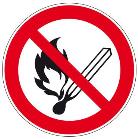
|
|
|
2.1.4
|
Emergency exits
- It should be possible to open emergency exits at all times; these exits must therefore be kept free of obstacles (goods and rubbish).
- It is not permitted to lock the emergency exits or use them for a purpose other than escape in an emergency.
|
|
2.1.5
|
Emergency response service
The purpose of the in-house emergency response service (BHV) is to prevent accidents and other calamities as far as possible and mitigate their consequences. Members of the service (recognisable by their yellow vest with the letters BHV on the back) are in charge until the professional emergency services arrive. Thereafter their duty is to assist these professional emergency services. In view of the nature of the activities in the Convention Centre the BHV team concentrates on evacuating people from the buildings. During an evacuation those present must leave the building under their direction.
|
Duties of the members of the emergency response team include:
- Providing first aid in the event of accidents (if no first aid staff present);
- The provision of first aid includes the use of an Automatic External Defibrillator (AED); this can be recognised by the AED logo (figure 3);
- Containing and fighting fires;
- Preventing and mitigating accidents;
- Sounding the alarm in emergencies and evacuating all workers and other people from the building;
- Alerting and cooperating with the municipal or regional fire service and other emergency services in the event of an emergency;
- Taking part in evacuation drills.
|
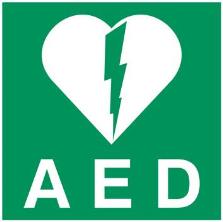
Figure 3: AED
|
|
2.2
|
What to do in the case of an accident or emergency
Swift action is required in the event of an accident or emergency. Every effort should be made to fight the fire or handle the emergency as effectively as possible.
|
|
2.2.1
|
Fire
In the case of fire:
- Think of your own safety;
- Assess the fire and try to extinguish it if this can be done safely;
- If you cannot extinguish the fire, break the glass of the fire alarm;
- Always report the fire by calling number +31 (0)20 549 12 34, stating the exact location and nature of the fire;
- If possible, lead any people who are in danger to a safe place.
|
|
2.2.2
|
Work accident
A work accident is the result of an unfortunate chain of events that harms the health of the victim. Your first response should be to think of your own safety and that of other people. Where the work accident causes injury, the victim must be comforted and reassured as far as possible. Help to the victim should be limited to first aid. The provision of further assistance should be left to the experts such as emergency response team members or emergency service personnel.
|
|
2.2.3
|
Reporting unsafe situations and work accidents
Work accidents should be reported to the emergency number of the Convention Centre (see Contact Data Annexe).
- Any work accident, including a minor one, or unsafe or unhealthy situation should be reported by employees to their superior or the customer. The superior should report this immediately (but in any event within 24 hours of the work accident) to the RAI’s Health & Safety Coordinator.
- Reports to the Health & Safety Inspectorate (Arbeidsinspectie) may be made only by the Quality, Safety, Health and Environment Manager and/or the Safety and Security Manager of RAI Amsterdam (see Contact Data Annexe).
|
|
2.2.4
|
Accident report form
An accident report form should be completed when a work accident is reported. This electronic form should be completed by a first aider from RAI Amsterdam and is intended for all work accidents that take place in and around the Convention Centre.
|
|
2.2.5
|
Evacuation
|
When the evacuation alarm is sounded everyone should immediately leave the workplace by a safe route and proceed to the nearest safe assembly area outside the building. Assembly areas can be recognised by the assembly area icon (figure 4).
|
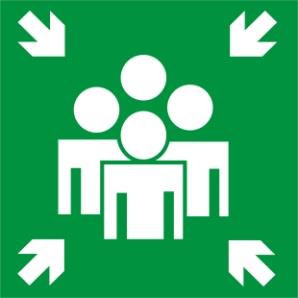
Figure 4: Assembly area
|
|
The nearest emergency door can be found by following the escape route signs (figure 5). In addition, everyone should follow the instructions of the emergency response team members. The escape route signs should be properly visible at all times.
|

Figure 5: Emergency exit
|
|
3 - Means of transport
3.1
|
Traffic
The general traffic rules applicable under the Road Traffic Act (Wegenverkeerswet) apply in and around the Convention Centre. In addition, the following special RAI rules apply:
Do
- follow the directions given by traffic controllers;
- keep to the maximum speed (see figure 6) in the Convention Centre and exhibition halls of five kilometres per hour;
- keep to the maximum speed on the outside grounds, the parking areas for goods vehicles and in the underground car parks of 10 kilometres per hour;
- obey the rules and speed limits that apply in the Convention Centre (maximum speed of five kilometres per hour), which also apply in pavilions and tents erected on the outside grounds;
- wear seat belts where applicable;
- use flashing lights, lights and signs on the public highway or during loading and unloading;
- drive on the right; traffic (including pedestrians) coming from the right has right of way;
- keep all parts of the body within the vehicle while it is being driven.
|
Don't
- sound the vehicle horn except when approaching a crossing where the view is obstructed and other traffic may be approaching; in such a case the horn may be sounded as a warning;
- block at any time access routes designated for use by the emergency services;
- take passengers if there is no place for them;
- drive under the influence of substances such as alcohol, recreational drugs or medicines that impair (or can impair) your capacity to react;
- drive faster than is permitted in the circumstances or conditions;
- get distracted by using a mobile phone, social media or traffic walkie-talkies, reading papers or digital devices, or using sound equipment, while driving.
|
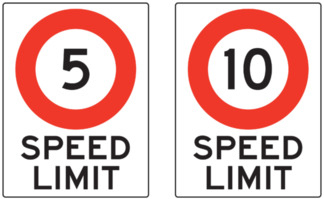
Figure 6: Maximum speed
- Traffic regulations
Everyone should obey the (statutory) traffic regulations around the Convention Centre.
- General
- Only approved vehicles (forklift, electric carts, aerial lifts, etc.) bearing a CE marking and approval sticker may be used in and around the Convention Centre. If the expiry date of the approval has passed the vehicle may no longer be used.
- Persons under the age of 18 years are not permitted to operate forklifts, electric cart, etc.
- Forklift operators should have received sufficient training and instruction in the use of the vehicle. They must produce a valid operating certificate when requested to do so.
- Certificate and driving licence (forklift, electric carts, aerial lifts, etc.)
Anyone driving a vehicle should have a valid certificate for the relevant type of vehicle (forklift truck, electric cart, aerial lift, etc.) and should be satisfactorily trained in its use. A valid certificate for the relevant vehicle is sufficient within the Convention Centre and the adjacent underground car parks.
Anyone driving such a vehicle (forklift truck, electric cart, boom lift, etc.) on the RAI’s outside grounds requires not only a valid certificate for the vehicle concerned but also a valid driving licence.
A T-driver’s license is mandatory for driving agricultural vehicles and motor vehicles on the public highway.
A T-license is mandatory for:
- Motor vehicles with a speed limit of max. 25-45 km/h. which will use the public roads.
- Motor vehicles with a speed limit of max 25-45 km/h, wider than 130 cm.
A T Driver’s License will be automatically obtained by everyone who completed their B driving exam before 2015.
Caution: The areas around the RAI-areas belong to the public highway.
The RAI’s outside grounds are deemed to include the area in front of the RAI along the Europaboulevard as well as the Congresplein, the Parkplein, the roads providing access to and from the P1/P2/P3/P4/P6 underground car parks and the P6, P9, P10 car parks, and the cycle paths (including the Green Swath beside hall 8 in the direction of the Beatrixpark and the Strandzuid/Zuidpool area). These grounds do not include the P1, P2, P3, P4 and P7 underground car parks and the P4, P5a and P5b parking areas for goods vehicles.
- Parking
Vehicles may be parked only in parking places or places designated by RAI Amsterdam for this purpose. Vehicles may only be parked in the Amstelkelder (car park under the Amstelhal) for loading and unloading purposes and not for longer periods of time.
- Cycling
- Bicycles may not be ridden on the path or against the direction of traffic.
- Front and back lights must be used in the dark.
- Bicycles should be inspected before use and any faults repaired.
|
3.2
|
Loading & unloading
- Loading and unloading must be carried out in controlled conditions and only at the delivery bays intended for this purpose.
- Pallets that are damaged or unfit for purpose may not be used.
- Poorly stacked pallets may not be loaded or unloaded.
- Driving with goods that protrude out of the vehicle is prohibited.
- Forklift trucks must use a flashing light during loading and unloading.
- Goods may not be placed in front of emergency doors, which must be kept free at all times. Fire extinguishers and hose reels must also remain accessible at all times.
Additional information for stage/theatre activities:
- Safe conditions must be maintained during loading and unloading activities. This includes securing ramps or using a forklift for heavy materials.
|
3.3
|
Forklift trucks
Forklifts must have the proper fork length and be suitable for the relevant weight. They must also be inspected for faults before use.
- Forklifts must be used in controlled conditions; badly stacked loads are not permitted. A forklift may not be overloaded (i.e. carry a load more than the prescribed maximum).
- Passengers must never be carried on a forklift.
- Operators must drive too fast around corners which could cause the forklift to roll over.
- Working or walking under the forks is prohibited.
- Forklifts driving in the halls must turn on their flashing light in order to be more visible.
- If gas-powered forklift trucks need parking for long periods they should be parked outside.
- A seatbelt must be worn unless the forklift is fitted with a closed safety cage. Operators must wear appropriate personal protective equipment as described in Article 4 (Personal Protective Equipment). If the warning lights are on, operators must also wear a safety helmet on the forklift
- Forklifts carrying a stacked load should be driven at walking pace.
- Forklifts should be driven in reverse if the load obscures the view ahead.
- The forks should be kept low when driving, with a maximum height of 15 centimetres above the ground.
- Diesel-powered forklifts may not be used in the Convention Centre. The only exception to this rule is where a load exceeds four tonnes, in which case the forklift should be fitted with a proper diesel particulate filter.
- Forklifts or other vehicles driven on the public highway must be fitted with a complete set of working lights and, at the rear, two reflectors. They must also have mirrors and a working horn.
- Batteries may only be charged at locations approved and allocated by Technical Services. Recharging of batteries is only allowed at designated charging stations (details available via Technical Services).
- Spillage must be prevented and cleaned where necessary.
- The use of a work cradle is permitted under the following conditions:
- the work cradle has a valid CE certification and a valid inspection sticker;
- only a few times in any given year;
- not more than four hours at a time;
- only in places that are hard to reach;
- there should be an EU-CBI type certificate if it is possible for the hoisting machine to lift the work cradle for more than three meters above the ground;
- it is not possible to reach the location with other appropriate means.
|
3.4
|
Aerial lifts
Aerial lifts include scissor lifts, boom lifts, genie lifts, telescopic booms and articulated booms. Before an aerial lift is used, all related safety equipment should be inspected.
- Any faults should be reported immediately to the person in charge and be repaired before the aerial lift is used.
- It is not mandatory to be leashed when working on a genie lift or a scissor lift when the upper body stays in the work cradle. The work cradle should be at least 110 cm high. Although it is not mandatory, RAI still advises to be leashed for your own protection.
- It is mandatory to wear (approved) protection when working on all remaining types of lifts.
- It is prohibited to leave an aerial lift while it is in extended position. The lift must first be lowered to the ground.
- An aerial lift may not be used in wind force six or higher or as indicated by the manufacturer.
- An aerial lift should always be positioned on a level surface. If the lift has struts, these should be used in the correct manner.
- People in the work cradle should remain standing in the cradle (on both legs) at all times. It is prohibited to raise the floor of the work cradle. Standing on railings is prohibited.
- Materials may not be allowed to project beyond the work cradle.
- An aerial lift should not be used for hoisting work.
- An aerial lift may be moved only if the boom is retracted and the lift is driven at walking pace. If necessary, someone should walk in front to assist.
- Diesel-powered aerial lifts should be fitted with an effective soot filter.
Additional information for stage/theatre activities: the relevant safety regulations should be observed when using a single-person aerial lift (Geni/alp).
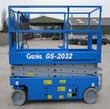
genie lifts |
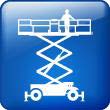
scissor lifts |
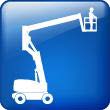
articulated booms |
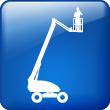
telescopic booms |
|
3.5
|
Electric pump trucks
- It is forbidden to stand on or step onto a pump truck while it is moving. Pump trucks may not be used to carry passengers.
- Electric pump trucks fitted with a platform may not carry passengers.
- A poorly stacked load may not be carried.
- Batteries may only be charged at positions allocated by Technical Services.
- Recharging batteries is only allowed at designated charging stations (details available via Technical Services).
- Spillage should be prevented and cleaned up where necessary.
|
3.6
|
Electric carts
For the purposes of this document, electric carts are understood to include all electric-powered vehicles.
- Electric carts may not be driven with a badly stacked load.
- The speeds referred to in 3.1 above should be observed when driving inside and outside the Convention Centre.
- It is not permitted to carry passengers, unless the vehicle is fitted with a passenger seat and the passenger sits on this.
- Seatbelts must be worn if fitted to the vehicle.
- If the vehicle has a handbrake this should be activated when the cart is not in use.
- Charging batteries is only allowed at positions allocated by Technical Services.
- Recharging batteries is only allowed at designated charging stations (details available via Technical Services).
- Spillage should be prevented and cleaned up where necessary
|
3.7
|
Exhaust fumes in the exhibition halls and enclosed areas
- Vehicles in an exhibition hall to carry out particular work should be driven out of the hall immediately after the work is completed.
- During work in the exhibition halls the engine should not be left running while the vehicle is stationary. If this is nonetheless necessary, the Event Manager should first be consulted.
- Unloading should take place outside the exhibition halls. Unloading in the halls may be permitted by way of exception when arranged with the Event Manager.
|
3.8
|
Measures for diesel emissions
In accordance with the Health & Safety regulations, diesel engines must be replaced with a different type of engine such as an LPG or electric drive. This regulation applies to forklifts used indoors which can carry less than four tonnes.
For diesel engine powered machinery for which replacement is technically unfeasible, measures should be taken to prevent exposure to diesel emissions or limit it to the level as indicated by the employer and as low as possible. The employer can comply with these obligations via:
- The removal of emissions via a direct connection on the exhaust to a safe place outside the enclosed area;
- The application of a soot filter;
- Using soot filters with a gravimetrically determined level of at least 70%;
- Using trucks with European Standard 4 or 5 diesel engines;
- Ensuring sufficient ventilation, possibly by opening the ventilation holes in consultation with Technical Services.
|
4 - Personal Protective Equipment (PPE)
Collective protection is preferable to individual personal protection. This is understood to mean protection intended for two or more persons.
Employers should provide information about dangers and hazards in the workplace and about the purpose of personal protective equipment and how it should be operated, worn and used. If the use of extra protective equipment is required in the safety instructions, everyone must wear or use this. If more than one item of personal protective equipment is worn, the various items must be co-ordinated with one another.
Personal protective equipment may be used only for the intended purposes and in accordance with the instructions for use. The safety instructions are indicated by means of pictograms. The meaning of the pictograms is explained in Article 9.3.
Employers must ensure that their employees and third parties who are hired or otherwise contracted to carry out work are properly informed about the activities to be performed by them and the related risks as well as about the measures to be taken to prevent or mitigate these risks.
4.1
|
Fall protection
People working at a height of above 2.5 metres or at heights where there is a risk of falling are obliged to wear fall protection equipment: a body harness, hook and lifeline with fall protection mechanism.
- Fall protection equipment should have a CE marking and at least meet the requirements of NEN- EN 361:2002. The hook should be attached to a strong and fixed anchor and be able to carry a minimal force of 1000 kg. The fall protection equipment should be maintained and tested at least once a year. Proof of approval must be visible. Employers should provide approved fall protection equipment to employees. The fall protection equipment should be inspected by the user before use.
- • After any fall, the fall protection equipment should be recertified.
|
4.2
|
Clothing and footwear
- Footwear
Safety shoes must be worn during the setup and breakdown periods in the exhibition halls, meeting rooms and lounges. During these periods, other passers-by in the Convention Centre are strongly advised not to enter the exhibition halls, meeting rooms and lounges (unless they are wearing safety shoes). This may be waived on the advice of the Safety and Security department.
Safety shoes must comply with EN-ISO 20345 and bear a CE marking. It is recommended that class S3 safety shoes or higher be worn during setup and breakdown periods. Safety shoes should be properly maintained and kept clean.
- Clothing
- Protective clothing should meet the requirements of EN 340 and be ergonomically sound, i.e. comfortable and well-fitting.
- Clothing must be made available for warm or cold weather conditions, as appropriate.
- People working in the underground car parks and the outdoor grounds around the Convention Centre are advised to wear a reflective jacket.
- It is obligatory to wear protective clothing during work which involves hazardous substances. This includes operating a rinsing or washing machine, working in the battery charging station and working with naked flames.
- Shorts may not be worn while carrying out fire hazardous work.
- Sleeves with cuffs or buttons may not be worn while operating machinery with moving parts.
- Work clothing for electricians may not have metal fasteners or zips.
- Clothing should be appropriate for the weather conditions.
- Heavy duty gloves
Heavy duty gloves should have a CE marking.
- Category I gloves provide protection against minimal risks (gardening gloves, home safety gloves, etc.).
- Category II gloves provide protection against intermediate risks (working with rough objects, tools, etc.).
- Category III gloves provide protection against very serious risks with a chance of fatal or permanent injury (chemicals, temperatures above 100 °C, etc.). Gloves may not be worn when operating machinery with moving parts.
|
4.3
|
Hearing protection
Employers are obliged to provide hearing protection to workers and to give instructions on its use. Employers must also inform workers about the possible dangers of noise exposure. Hearing protection means internal protection (ear plugs and otoplastics) and external protection (earmuffs). Otoplastics are preferable in the case of regular use in very noisy areas.
- In the case of noise levels between 80 and 85 dB, the use of hearing protection is recommended. Hearing protection may also be desirable with noise levels under 80 dB. The use of hearing protection is obligatory with noise levels of 85 dB or more and must be supplied by the employer.
- The use of earplugs or cotton wool may not offer sufficient protection against loud noises. Remember to take the maximum muffling effect of protective tools into account.
Additional information for stage/theatre activities:
The visiting sound technician should warn anyone present before testing at high sound levels.
|
4.4
|
Head protection
Head protection may consist of an industrial helmet or, in the case of catering staff, a hairnet or hair cap. A helmet must comply with EN397 and bear a CE marking. A hairnet or hair cap (for work in a kitchen) must meet the HACCP requirements.
- Workers are obliged to wear a safety helmet when there is a danger of falling objects.
- Catering staff must always wear a hairnet or hair cap in accordance with the HACCP rules. Hairnets may not be reused. Before starting work, workers must inspect their helmet for faults and check the expiry date. If this date has passed the helmet may not be used as it no longer affords protection. After a helmet has been hit by a falling object it may not be reused and must be replaced.
- A padded cap is not a helmet, does not protect against falling objects, and is therefore not allowed.
|
4.5
|
Face protection
- Safety goggles: workers must wear safety goggles when carrying out work that poses a risk to the eyes, for example work involving hazardous substances or flying particles. Safety goggles should bear a CE marking.
- Face shield: a full face shield should be worn if safety goggles do not provide sufficient protection for the head. This does not protect against dust particles and gases.
- Breathing protection: Breathing protection is obligatory for working in an environment in which there is inadequate ventilation or dangerous vapours or substances which can give off fumes, or where substances are released (e.g. sawdust or fine particulate matter). Breathing protection means, among other things, a dust cover or a half face mask with the appropriate filters.
- Welding protection: Workers carrying out welding work must wear welding protection equipment. Before starting work they should inspect their equipment for faults. Any faults discovered must first be repaired. The welding protection equipment should be modified in keeping with the type of work undertaken, such as electric welding, MIG/MAG or autogenous welding.
|
4.6
|
Maintenance of personal protective equipment
Personal protective equipment should be inspected for faults prior to every use and any faults repaired before work commences. If the faults cannot be repaired, the equipment in question may not be used. Personal protective equipment must be inspected on an annual basis and have a label with the next inspection date.
|
5 - Stand construction
A detailed description of this subject and related matters can be found in the Facility regulations.
- It should be possible to reach and leave stands (places of work) safely.
- A fire extinguisher must be kept within reach when carrying out work that poses a fire risk.
- Combustible items or parts of a stand must be shielded from the work.
- The task of connecting stands to the Convention Centre power supply is entrusted to a recognised electrical contractor used by RAI Amsterdam. Power may not be generated in any other way. Regardless of which electrical contractor is used, the electrical inspections at the stands must be tested and approved by the Convention Centre’s recognised electrical contractor. The manager of RAI Amsterdam’s Technical Department is responsible for the electricity grid.
5.1
|
Transport routes and gangways
Transport routes should be of ample width and free of obstacles. All transport routes and gangways should be kept as free as possible of gear and rubbish. If work is being done on a stand, for example the laying of a floor, and there is no space on the stand for the gear and materials being used, things may temporarily be placed in the gangway. This applies only to items intended for the work being carried out at that moment and they should then be removed as quickly as possible. Preferably, however, these items should be stored outside the exhibition halls and then brought into the halls on forklift trucks.
Safety Managers are authorised to remove items (or cause them to be removed) if any instructions they give are not obeyed. Blocking access to fire extinguishers, fire hose reels, emergency doors, emergency showers and other safety facilities is strictly forbidden.
|
5.2
|
Use of tools, particularly electric tools
- Only CE approved and properly maintained tools may be used. Electric tools should meet all relevant requirements.
- To prevent injury, workers are not allowed to wear rings, piercings, watches, bracelets or necklaces when working with tools and machinery with moving parts. Wearing jewellery and loose clothing is any event not desirable when using tools.
- Tools, particularly electric tools, should be inspected before use. The use of damaged tools is prohibited.
- When electric tools are no longer needed for work they must be completely switched off; this also applies during work breaks.
- Tools should be stored in a way that precludes their use by unauthorised persons
- When electric tools are used in the work area, this should be well-lit and stable.
- Workers are obliged to wear personal protective equipment as described in Article 4 (Personal Protective Equipment).
- Tools should be used only for their intended purpose.
- Work equipment must be periodically tested and approved. The approval date must be visible on the equipment. The latest approval certificate must be made available on request.
|
|
5.2.1
|
Prohibition on removal of protection devices
It is prohibited to remove, disable or switch off protection devices fitted to machines and tools. It is strictly prohibited to use a machine or tool if the protection is no longer present or is damaged.
|
5.3
|
Electrical work
It is strictly prohibited to carry out work involving live electrical current. Electrical work may be carried out only by NEN 3140 qualified staff. Personal protective equipment such as a helmet with face screen, rubber gloves and non-flammable clothing should be worn at all times. All installations (including wall sockets) should comply with the requirements of NEN-1010.
- Before electrical work is started the following steps should be taken:
- switch off all installations or equipment that will be worked on;
- lock the installation by means of padlocks (lockout/tagout system);
- check that all equipment is off. Use a two-pole voltage tester in accordance with NEN3140, not a voltage-tester or induction test pen;
- hang a tag or magnetic strip on the main switch clearly indicating that the switch may not be operated and showing the date, the name of the event and the nature of the work being carried out (lockout/tagout system);
- remove and take away knife-blade fuses if current is not permitted; these may be removed only by a qualified (trained) person;
- enter a record of this in the wiring lists and wiring books of the power supply electricians;
- cover with insulation material any parts that are live.
- Before an installation is activated the following steps should be taken:
- end or pause work;
- remove temporary earth or short-circuit connections;
- remove padlocks;
- replace safety devices that have been temporarily removed;
- replace temporarily removed devices that protect against direct touching;
- check whether the installation is deemed safe.
The activation of an installation should be carried out by a qualified person when instructed by the person responsible for the installation.
- c) Locating an electrical fault:
Electrical malfunctions should be located by a qualified person. Other parts of the circuit should be covered with insulating material and warning signs should be put in position. Only double-insulated tools and electrical personal protective equipment may be used.
|
5.4
|
Sealing cable entry holes in the floor
Cable entry holes in the floor must be sealed off when not used. Water pipes or electricity or ICT cables may protrude from holes in the floor, the position of which should preferably be marked.
|
5.5
|
Order, tidiness and hygiene
Workplaces should be fitted out in accordance with ergonomic principles. To ensure proper hygiene, the workplace should be kept free of dust as far as possible and, in so far as work safety so requires, kept in proper order.
- Cables and wires should be tucked away as far as possible to prevent people from tripping. As safety is improved if cables and wires are taped up, hung up or covered with an anti-slip mat, this has been made compulsory by RAI Amsterdam.
|
5.6
|
Correct working conditions
- The place where work is carried out should be sufficiently lit.
- There should be sufficient drink at the workplace to enable workers to warm up or cool down.
- There should preferably be an area where workers can warm up or cool down.
- The workplace should be adequately ventilated to ensure that there is sufficient uncontaminated air.
|
5.7
|
Physical burden
- Work should be organised in such a way, the workplace fitted out in such a way and the production working method applied or such aids and personal protection means used that the physical load entails the fewest possible dangers for the safety and health of the worker.
- For their own safety workers should not manually lift and carry weights heavier than 23 kg. Workers should not push or pull weights stationary
load heavier than 30 kg. Weights in excess of 25 kg should be lifted with the help of a mechanical aid. Employees should not push of pull a load heavier than 20 kg to keep it moving.
- Lifting should be done by bending the knees and keeping a straight back. The load should be kept as close as possible to the body (figure 7).
- Working positions should be varied as much as possible in order to prevent repetitive strain injury (RSI).
- Every effort should be made to avoid spending lengthy periods kneeling or in an awkward or twisted posture.
|
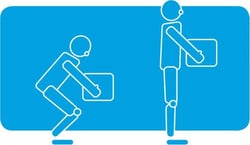 |
|
5.8
|
Compulsory use of safety harness and line
Two rules apply specifically to the erection and dismantling of scaffolding and grandstands:
- anyone involved in erecting or dismantling scaffolding or a grandstand at a height
of more than 2.5 metres and working within 1.5 metres of the edge of scaffolding or grandstand must wear an approved safety harness and line; this is required by Dutch law, namely Article 3.16 of the Working Conditions Decree (preventing the risk of falls);
- anyone involved in erecting or dismantling scaffolding or a grandstand and working on or under the uncompleted structure concerned must wear an approved safety helmet.
|
5.9
|
Raised floors
The use of raised platforms is recommended for stands with water and gas pipes, and/or a lot of electrical wiring across the floor (the stand builder can provide advice on this). When using platforms in a stand, it is important to keep in mind that the sides need to be sealed off and neatly finished, and the raised floor must fit within the boundary lines of the stand.
|
6 - Working at heights/tools
6.1
|
Working at heights
Working at height involves working on scaffolding, on a grandstand or multi-floor stand or on a roof.
- Scaffolding
- Handrails and railings must be placed at least one metre above the work surface;
- Scaffolding material should be of good quality and comply with the requirements of NEN-EN 12811-1. Scaffolding erected inside the exhibition halls at a height of over 12 metres requires bracing. The scaffolding should be erected in accordance with the requirements of NEN-EN 1298.
- A mobile scaffold tower may not be moved if materials or persons are present on the scaffolding. Mobile scaffolding may be moved only if the height is less than eight metres.
- Scaffolding may be erected only on a firm, level surface. The use of stabilisers is obligatory.
- The scaffolding must be earthed when working with electricity.
- The work platforms of scaffolding and multi-storey stands should be completely boarded and have proper edge protection (planks of at least 10 cm high). A guard rail should be fitted at a height of one metre above the work platform and an intermediate guard rail at 50 cm.
- The maximum load for which scaffolding is designed to take must never be exceede
- The maximum load must be indicated on the scaffolding at eye level.
- Materials may never be stacked on a scaffold to a height in excess of 55 cm, unless extra guard rails have been fitted.
- The work platform of a scaffold should be marked in order to prevent collisions and the risk of people being hit by falling objects.
Two rules apply specifically to the erection and dismantling of scaffolding and grandstands:
- anyone involved in erecting or dismantling scaffolding or a grandstand at a height of more than
2.5 metres and working within 1.5 metres of the edge of scaffolding or a grandstand must wear an approved safety harness and line; this is required by Dutch law, namely Article 3.16 of the Working Conditions Decree (preventing the risk of falls);
- anyone involved in erecting or dismantling scaffolding or a grandstand and working on or under the uncompleted structure concerned must wear an approved safety helmet.
- Inspections
The builder, who uses scaffolding, should be in possession of an inspection certificate. The user may be requested at any time by the enforcing authority to produce the certificate. Scaffolding should be inspected and approved before use. This should be done by a person who is in possession of the scaffolding erection ‘B’ or similar certificate (this does not apply to mobile scaffolding). If the scaffolding has been approved, a green label bearing the date of the approval must be attached to it. In the event of alterations to the scaffold, follow-up inspections must be carried out before use.
- Use
The wheels of mobile scaffold towers should be blocked before work starts. The scaffolding should be climbed in the correct manner (on the inside). Work may not be carried out from elevations on the scaffold (such as a ladder). It is prohibited to carry out work on scaffolding that has already been partially dismantled.
|
6.2
|
Ladders and stepladders
General
- A ladder or stepladder should fulfil the requirements of the applicable standards (e.g., NEN 2484 or EN131) and have a valid approval sticker
- The rungs on a ladder or the steps on a stepladder should have an anti-slip design.
- Working on a ladder or stepladder is permitted only if the use of other aids is not possible.
- Scaffolding or an aerial lift should be used for repetitive work.
- A ladder or stepladder should preferably not be used at heights of more than 2.5 metres. The maximum height at which a ladder may be used is 10 metres.
- The access to a ladder or stepladder should be kept free at all times.
- If necessary, the area around the ladder or stepladder should be marked.
- Multi-section or extension ladders should be used in such a way that the various parts cannot slide in relation to one another.
- Ladders must be secured against sliding.
Inspections
Ladders and stepladders should be inspected for faults before use. Do not use if faults are discovered, the inspection date has expired and/or the rungs are dirty. Ladders and stepladders should be inspected at least once a year and the next inspection date should be marked (legibly) on them.
Positioning
- Do not place ladders in front of a door. If there is no other choice, the door should be locked.
- Verrolbare ladders of trappen moeten worden vastgezet voordat zij worden betreden.
- Rolling towers should be secured before being mounted.
- Ladders and stepladders should be positioned in such a way as to ensure stability during use.
- A ladder should be positioned at an angle of approximately 75 degrees.
- A ladder should be placed in such a way that the top or bottom cannot slide away. To maximise safety secure the ladder or stepladder by a rope or stabilisation device.
- A ladder should extend at least one metre above the workspace to which it gives access. There must be an adequate handhold present at the height at which people get off the ladder.
- The ladder must be positioned in the correct manner (i.e. not upside down or back to front) and on a level surface.
Use of ladder or stepladder
- Ladders and stepladders may not be used when wearing shoes with dirty or smooth soles.
- Work must not be carried out if it is beyond reach, i.e. within arm’s length.
- The force during activities may not exceed 10 kg.
- Tools should be brought up with ropes or in a holster attached to a belt.
- A ladder or stepladder may be used only if weather conditions permit.
- A ladder or stepladder may not be used outdoors in wind force 6 or higher.
- A ladder or stepladder may not be moved while the user is still on it.
|
6.3
|
Rigging
- Approved fall-arrest protection must be worn when working at height of more than 2.5 metres, and for activities performed on an aerial lift.
- A safety helmet must be worn when working at height (including rigging).
For all other rules see the manual entitled Rigging in the RAI - Guideline for Riggers.
|
7 - Hazardous substances and the environment
What are hazardous substances?
Hazardous substances can be identified by the symbols on the packaging labels. These symbols indicate, for instance, whether a substance is highly flammable, poisonous, irritating, corrosive or caustic. R (Risks) and S (Safety) statements are also often indicated (on the safety sheets). R statements indicate specific risks and S statements indicate safety recommendations. In general, hazardous substances are considered substances that can result in health problems for anyone who comes into contact with the substance in the workplace
There may be hazardous substances that do not have a label or safety sheet at the location. These are usually hazardous substances produced during operational processes, such as welding fumes and incineration products.
Working with or using cytostatic, carcinogenic and reprotoxic substances is strictly prohibited in and around the premises of RAI Amsterdam.
7.1
|
Working with hazardous substances
- RAI Amsterdam should be informed before any work involving the use of hazardous substances is commenced.
- Before the start of work involving the use of hazardous substances, the employer should inform workers about the risks posed by the substances concerned, the procedures to be followed and the safety measures to be taken, the use of the requisite personal protective equipment, the procedures and measures in the event of an accident or fire (including the use of fire extinguishers) and waste handling in accordance with Article 8 of the Working Conditions Law.
- Smoking and naked flames are strictly prohibited when working with hazardous substances.
- Collective prevention has initial priority in the case of hazardous substances. Collective prevention includes:
- using tools with an extractor and the extraction of hazardous substances by means of an extractor hood;
- providing adequate ventilation when weather conditions permit;
- regularly cleaning the place of work.
- A safety data sheet is obligatory for all hazardous substances and preparations (mixtures of substances). If a chemical product contains more than one per cent of hazardous substances, it must have a safety data sheet.
- Personal protective equipment should be worn as described in chapter 4 if collective prevention is not sufficient.
- Young employees under the age of 18 years are not allowed to work with hazardous substances.
- For the removal of hazardous substances (including containers of latex, paint brushes, frying fat, etc.), contact our internal partner Renewi Icova (Environmental Services) (Environmental Services) on +31 (0)20 549 31 22.
|
7.2
|
Storage of hazardous substances
- It is strictly prohibited to smoke or to light a naked flame in the vicinity of places where hazardous substances are stored.
- Fireworks in any form may not be brought into or stored in the Convention Centre unless a licence has been granted by the competent authorities.
- Hazardous substances may not be stored along the route driven by forklift trucks or other means of transport.
- Hazardous substances should always be placed in drip trays. Stocks of 25 litres or more of hazardous substances and environmentally hazardous substances must be placed in drip trays.
- Gas cylinders or other high pressure cylinders should always be properly secured and protected against falling.
- Explosive substances must always be stored outdoors at the location indicated in the licence. If no location is known, Technical Services should be consulted.
- Other substances may be stored indoors if this does not compromise safety.
- Gas cylinders must bear an expiry date. It is strictly prohibited to store gas cylinders that have passed their expiry date in the Convention Centre.
- Hazardous substances should not be stored in direct sunlight wherever possible.
- Oxygen cylinders may not be placed with cylinders containing flammable gases.
- Hazardous substances should be stored in accordance with guideline PGS-15 (previously: CPR- 15-1).
Active stock (event related)
- Active stock refers to the amount required for a given activity. The size/amount is aligned with the use for one day, as determined by RAI Amsterdam.
- If the active stock is over 50 litres, a liquid proof drip tray is required with sufficient capacity to contain the entire content of the stock.
- A welding cart with gas cylinders is considered active stock.
- A series of opened packaging units with various substances which are used on a regular basis (such as paint cans in a painting workshop) are considered active stock.
|
7.3
|
Safety data sheets
For every event, standbuilders/organisers must ensure that there is a safety sheet for each hazardous substance that is visibly present at the work stations. A digital copy should be submitted via safety@rai.nl.
In addition to the safety sheet it should contain the following data:
- the name of the exhibition/event;
- the stand number.
|
7.4
|
Battery charging area/station
- • A battery charging area or station is understood to mean a place where the battery electric vehicles are charged. The location for charging batteries is allocated by the Technical Services department of RAI Amsterdam.
- It is strictly prohibited to smoke or to light any form of naked flame in the vicinity of a battery charging station.
- Wearing personal protective equipment is obligatory when a battery needs to be removed from the vehicle. This must be done using the appropriate electrical tools.
- The battery charging area should be properly ventilated.
- Any leaked battery acid should be cleaned up as quickly as possible. The incident should also be reported to the Quality, Safety, Health & Environment Manager of RAI Amsterdam, the Permit Specialist or the Security Manager. If they are not present, the incident should be reported to the duty Event Manager.
|
7.5
|
Asbestos
The use of asbestos in the Convention Centre is strictly prohibited. An asbestos protocol applies within RAI Amsterdam, a copy of which can be obtained from the department Real Estate & Technical Services van RAI Amsterdam via werkenmetasbest@rai.nl.
|
7.6
|
Rubbish and waste
Rubbish generated by work carried out in the Convention Centre must be sorted and disposed of in the Bnext containers ordered from the Webshop or the Bnext refuse bags. Firms may not use their own refuse bags and these will not be collected by Bnext.
Rubbish should be sorted in the following way:
- plastic in the special bags;
- wood in the special wood container;
- residual rubbish in the general container.
Hazardous waste such as used oil, paint residues and contaminated solvents should be separated before being handed in (see next section).
Any residual waste or rubbish will be removed at the expense of the stand holder.
|
7.7
|
Hazardous waste
It is strictly prohibited to throw away hazardous (chemical) waste in the containers or refuse bags. The Environmental Services department of Bnext (+31 (0)20 549 31 22) should be contacted for the disposal of hazardous waste (such as paint).
After written application to Bnext, hazardous waste must be placed in designated (sealable) containers in the original packaging with its obligatory product label. The firm concerned is obliged to remove empty paint tins, brushes, caulking cartridges etc. itself if no application has been submitted.
|
7.8
|
Environmental calamity
In the event of an environmental calamity, the emergency number +31 (0)20 549 12 34 should be called immediately (see also Contact Data Annexe).
There is deemed to be an environmental calamity if the soil or surface water becomes contaminated. In the event of an environmental calamity, the Quality, Safety, Health & Environment Manager of RAI Amsterdam should be contacted. If the Quality Manager is not present, the duty Event Manager should be informed.
|
8 - Enforcement
8.1
|
Enforcement of rules
- All rules and regulations contained in the previous chapters should be complied with. Failure to do so may result in the imposition of sanctions (see Article 8.2 below).
- Safety Managers are responsible for enforcing the rules.
- Workers should immediately report unsafe situations to their superior.
- Instructions given by Safety Managers should be obeyed at all times. Where situations occur that are patently unsafe, an employee may be ordered by or on behalf of RAI Amsterdam to terminate an activity immediately.
|
8.2
|
Sanctions
Sanctions will be imposed if work is carried out in an unsafe manner or rules are not complied with as described in this manual. These sanctions may be imposed in the following manner:
- employees working in an unsafe manner for the first time will be given an oral reprimand. If the situation is very unsafe, they may be ordered to stop the work immediately. Notice of this will be sent to the exhibitor and to the organisers at the end of the day;
- if nothing is done to improve safety after the first reprimand, a second oral reprimand will be issued;
- if the first two reprimands are not complied with, the employee may be removed from the workplace.
A sanction and enforcement policy applies within RAI Amsterdam, more information on which is available from the Quality, Safety, Health & Environment department.
|
9 - Annex
9.1
|
Annex: Additional regulations related to stage/theatre activities
Liabilities
Various parties will be active at the location during conferences, events or theatre productions. Each party is responsible for creating a safe workspace for its employees and the other parties present. Informing one another of risks is a statutory obligation in accordance with Article 8 of the Dutch Working Conditions Law.
As host, RAI Amsterdam has the final power of decision on whether or not to allow a given activity. The activities remain the responsibility of the party who carries them out.
Stage access
During setup and breakdown activities and changes made to the stage, access is prohibited to persons who are not involved in relevant activities as well as underage employees (with the exception of trainees/interns and cast members).
Access is only granted to guests and/or visitors during a (theatre) production after discussion with the stage manager on duty.
Training and information
Each party is responsible for properly informing all active employees, including flexible workers, trainees/interns and volunteers, about the activities to be performed, the related risks and the measures required to minimise these risks. Guests and visitors may not have access to the theatre via the backstage area and must always use the proper entrance.
The following principle is applied for 'risky exhibitions/events in RAI Amsterdam'. Based on different characteristics, events/exhibitions are divided into three risk categories, namely, high, medium or low risk.
Decor and constructions
- All constructions and decors must meet the applicable requirements. Suspension points must be suitable for the weight to be carried, and the positioning must be stable. Walls and screens must be secured against falling.
- For practicable construction for orchestras or choirs, railings must be installed whenever the height is one metre or more, and the parts thereof must be interconnected.
Extra regulations for hazardous waste (for details see Article 7 - Hazardous substances and the environment of this handbook).
- All hazardous and volatile substances such as acetone should be stored in the designated cupboard. No hazardous substances are to be left in the dressing rooms if they are not being used
- Oxygen/nitrogen/chemically inert gas cylinders used on stage must have a stable position and be secured against falling. Insofar as applicable, all hoses and connections must meet the applicable demands.
- A license is required for bottles with flammable gases and the same regulations as indicated above apply.
Rigging and stage rigs
Stage rigs
- A rigging plan will be submitted to the stage manager at least two weeks in advance and include the setup of the rigs and the weight per rig. The materials connected to the rigs will be the responsibility of the using party. The stage manager and stage rig operator have the authority to refuse specific loads.
Rigging
- A rigging plan will be submitted to the stage manager at least two weeks in advance. It will contain the position, content and load of the rigging points. The rigging handbook lists further requirements and guidelines.
- Riggers and technicians only have access to the grid and catwalks after consulting the stage manager. The stage rig operator must be informed when accessing the grid.
Special effects
The stage manager must be consulted about the use of special effects at least two weeks in advance. Some effects require a licence, others require permission.
Permission
- The use of fire effects and torches
- The use of smoke effects
- The use of confetti canons
- The use of helium balloons
- The use of water basins or rain installations
- Flying persons
|
Licence
- The use and presence of pyrotechnical effects
- The use and presence of firearms
|
Maintenance and inspection
All (personal protection) equipment must be safe and equipped with a valid inspection label. This equipment includes:
- electrical installations (dimmers, lights and cables);
- installations connected to gas cylinders;
- hoisting equipment;
- ladders and stepladders.
|
9.2
|
Annex: Meaning of pictograms
|
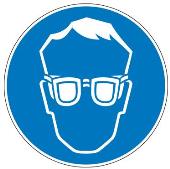 |
Safety goggles |
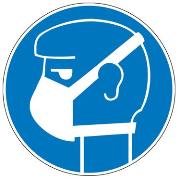 |
Breathing protection |
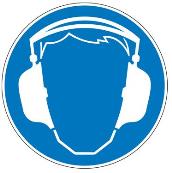 |
Hearing protection |
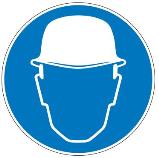 |
Safety helmet |
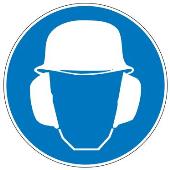 |
Helmet and hearing protection |
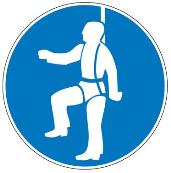 |
Fall-arrest protection |
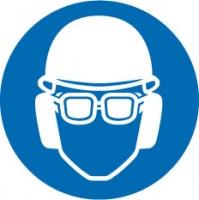 |
Helmet, safety goggles and hearing protection |
 |
Safety shoes |
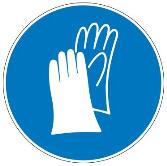 |
Gloves |
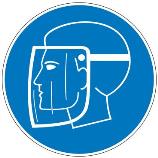 |
Face protection |
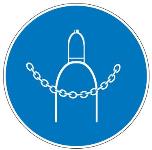 |
Chain gas cylinders |
 |
AED |
 |
Emergency escape route |
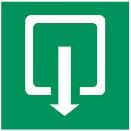 |
Emergency escape route |
 |
Emergency exit |
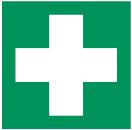 |
First aid |
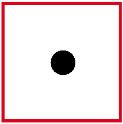 |
Fire alarm |
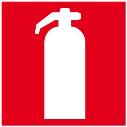 |
Fire extinguisher |
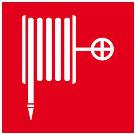 |
Fire hose reel |
 |
No smoking |
 |
Naked flame prohibited |
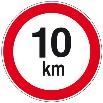
 |
Maximum speed 5/10 km per hour |
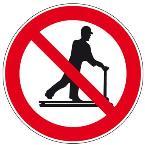 |
Scooting on a pump truck is prohibited |
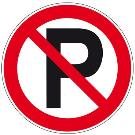 |
No parking |
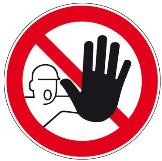 |
No access to unauthorised persons |
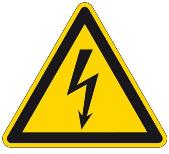 |
Electric current |
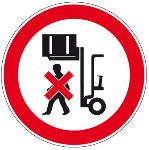 |
Do not walk under the load |
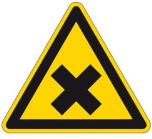 |
Hazardous substances |
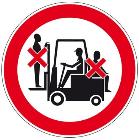 |
Riding on a forklift is strictly prohibited |
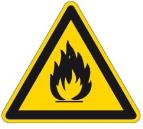 |
Flammable substances |
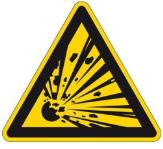 |
Explosives |
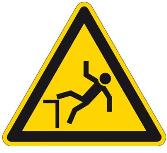 |
Risk of falling due to height difference |
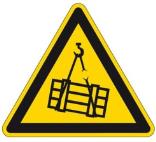 |
Hanging load |
 |
Warning area |
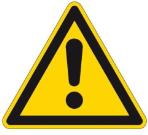 |
Watch out: danger! |
|
|
9.3
|
Annex: RAI Safety Rules
Safe and secure in RAI Amsterdam during event setup and breakdown
|
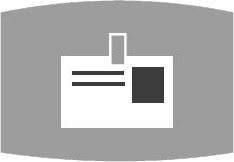 |
1. Access
RAI Amsterdam is only accessible to people in possession of a valid access pass. |
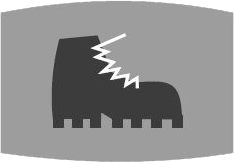 |
2. Safety shoes
Approved safety shoes must be worn during the stand set-up and breakdown periods. |
 |
3. Safety helmet
An approved safety helmet must be worn when the safety sign is on in the exhibition halls. |
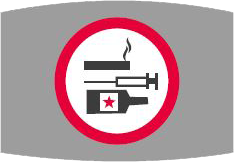 |
4. Smoking, alcohol and recreational drugs
Smoking, drug-taking and the consumption of alcohol are prohibited. |
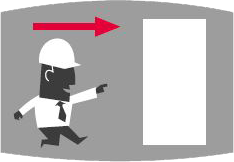 |
5. Emergency exits
- The emergency exits and yellow traffic routes should always be kept free of obstructions.
- The emergency exits should only be used in emergencies.
|
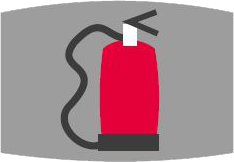 |
6. Fire extinguishers
Fire extinguishers should always be kept accessible. |
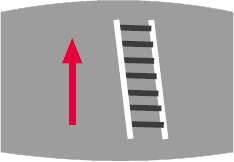 |
7. Working at heights
- Persons working at heights above 2.5 metres on a mobile scaffold or an aerial lift must be attached by a safety line.
- It is not allowed to work on a ladder at heights above 2.5 metres for more than two consecutive hours. In these situations a mobile scaffold or an aerial lift should be used.
|
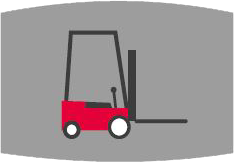 |
8. Transport
- The maximum transport speed is 5 kilometres per hour inside and 10 kilometres per hour outside.
- The forks of a forklift truck that is in motion may not be more than 15 centimetres above the ground.
- A forklift truck may not be used to transport or lift persons.
- It is forbidden to make telephone calls while operating a means of transport.
- Only trained personnel have permission to operate a forklift truck.
|
 |
9. Young people
Persons under the age of 16 years are not allowed into the RAI during the setup and breakdown periods. |
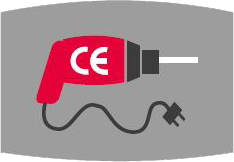 |
10. Materials and tools
Only approved (i.e. CE certified) machines and tools may be used. |
MTj/CvDN/0.2/March 2018












































